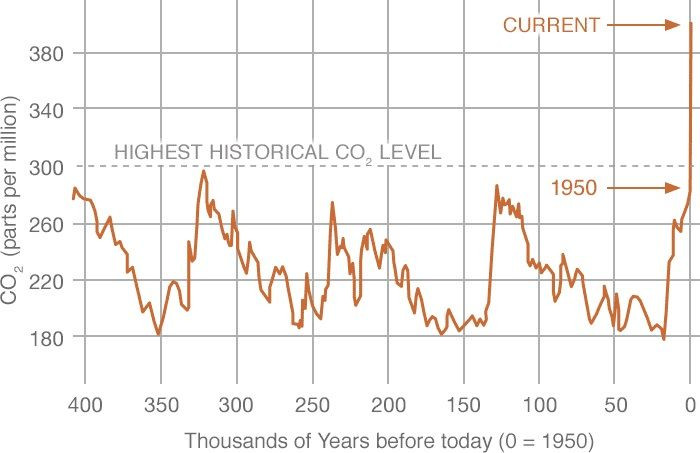Ancient Ice Core Reveals CO2 Levels, Climate Of 2.7 Million Years Ago

Million year old ice cores were just one-upped by an even older core found in Antarctica. The core’s age and the air bubbles it contains reveal a lot about the Earth’s climate history and possibly reveal what caused the Ice Ages. The 2.7 million-year-old core is the only of its kind that can reveal what the atmosphere on Earth was like so long ago.
This specific core showed that the level of carbon dioxide in the atmosphere at the time it was formed was no greater than 300 parts per million, reported Science Magazine. Currently the Earth’s atmosphere is at more than 400 ppm a number that’s increasing.
Carbon dioxide is a heat-trapping gas, so the more of it there is in the atmosphere the more gas there is trapped and the htoter it gets on planet Earth. Levels of CO2 have always shown some cyclical trends, but since the industrial era CO2 levels have spiked leading to unprecedented levels never recorded.
Ice cores are a key means by which climate scientists learn about the atmosphere of years past but they’re a proxy meaning they aren’t direct measurements. By removing thin ice cores from glaciers and icebergs scientists then test the air bubbles trapped in those cores. The composition of the bubbles reveal what the air was like around the time it was trapped and the core was formed.
To extract the air from the cores scientists can crush the core or melt it in a vacuum so no other air contaminants it before testing. The core then goes through sophisticated instruments that measure levels of pollution by checking for sulfates, metals aerosols and any gases. The type of oxygen isotope found in the core can also reveal what the temperature on Earth was like when the core formed, according to NOAA.

Other cores are newer and it had been assumed that old cores would be deep under ice and difficult to release, but this discovery shows that that it not the case. The 2.7 million year old core was found not that deep down in “blue ice” which is frequently ignored when looking for ice cores. That blue ice is the result of snow falling on formed ice and compressing down. The ice isn’t actually blue, it just looks it the color comes from the short wavelengths of light scattering and the further the light travels in the ice the bluer it looks, according to the National Parks Service.
The ice core is only one proxy though so testing others as old as it and testing other proxies thought to be from that time period would help confirm the level of CO2 found. The researchers from Princeton who found the core are hoping to return to the area where it was drilled to find possibly even older ice for further research in the future, Science reported.
© Copyright IBTimes 2025. All rights reserved.



















